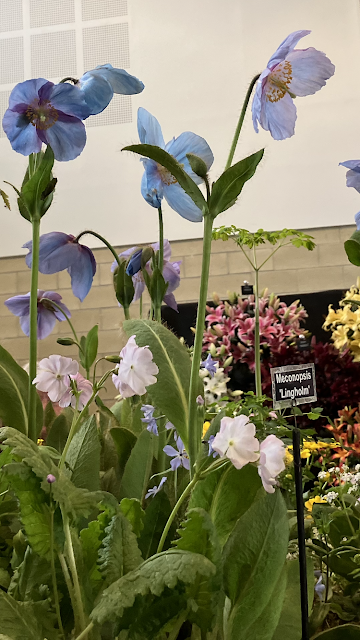David
is known to some of us, particularly
for articles
written for Village
Link.
He is a member of the
Chartered Institute for Horticulture and
is currently
based
in Houghton,Carlisle. David’s
career
spans forty plus years. After looking after his parents’ large
garden in the 1970s, he joined Leeds City Council as an apprentice
gardener at sixteen. Post university he worked in conservation in the
UK, spent time in India and latterly was a viticulturist
in
Italy. He currently works for the government, managing plant health
control in the North of England; e.g.
the statutory notification of Category A - Pests & Diseases).
David
is also
is an advisor for potential vineyard sites in England.
Accurate information may be accessed from the RHS with their publication in
April
2017
https://www.rhs.org.uk/science/gardening-in-a-changing-world/climate-change
Weather
has changed dramatically in the last decade resulting is
29
extra growing days in the year! Seasons
are becoming less defined with warming (drought in summer) coupled
with heavy rains and storms. And the pattern is becoming less
predictable over time. So flood management (e.g. Cumbria & West
Country) and water storage (e.g. East Anglia) are now
priorities.
Due
to seasonal blurring, flowering plants are blooming earlier than
previously; so in evolutionary terms there is likely to be a current
mismatch
for their pollinating
insects.
So
what can we do as gardeners?
In
a nutshell we will need to gradually, but increasingly introduce more
resilient
plants.
TIPS
/ IDEAS
1.
Source plants from reliable nurseries and growers to reduce risks of
introducing pests and diseases
2.
Trees – Planting smaller trees species will mean that they are more
resilient to storm damage. Smaller
trees (e.g. Acacia
dealbata)
have larger root systems compared to their leaf canopy surface. Tree
whips planted without support produce stronger trees long term. In
the south consider planting non indigenous species.
E.g. In Kew Gardens where
the soil is free draining (sand and gravel), the beech trees are
under stress (and so are susceptible to disease) caused by summer
droughts and in winter rains are leeching out nutrients and
destabilising the soil.
3.
Introduce Mediterranean plants where there is drought. Consider
growing peaches, olives and almonds (maybe not in Cumbria though).
4.
Decrease the amount of lawn (which is a monoculture), consider ‘No
Mow May’. Learn to appreciate mixed lawns.
5.
Rethink borders, summer displays are increasingly difficult to
irrigate. Recognise drought lovers.
6.
Raised beds reduce problems of waterlogging.
6.
Read Beth Chatto’s book, The
Dry
Garden,
first
published in 1978!
With
these climate
changes
viticulture
has
become an emerging industry in England and Wales. However
viticulturists
will
need to be mindful of those late ‘naughty’ frosts
that occur: so aspect and altitude will need consideration.
(Historically Henry VIII was the first to nurture the hope of a
growing grapes for wine in the sixteenth century!) Indeed
prestigious Champagne
houses are
currently competing for potential land to cultivate grapes,
especially
in
the
south of England. However such investment will only be possible if
the
land is free of Category
A (Notifiable)
Plant Pests
& Diseases.
With
global plant mobility and climate change; so also come new threats
for plant health in the UK.
https://planthealthportal.defra.gov.uk/pests-and-diseases/pest-and-disease-factsheets/notifiable-diseases/
Xylella
fastidiosa
(BACTERIAL) - colonises the xylem vessels of plant systems, leading
to internal
dehydration with wilt, dieback & leaf scorch
Phytophthora
(FUNGAL) – P.
ramorum
(oak USAand
larch trees) / P.
kernoviae
(rhododendrons)
Anoplohora
chinensis
/ Citrus Long Horn (BEETLE) – feed inside tress and weaken them
Dryocosmus
kuriphilus
/ Oriental Chestnut Gall (WASP)
Anoplophora
glabripennis
/ Asian Longhorn (BETTLE) – found in certain trees, that survive in
wood plallets that are untreated.
Candidatus
liberibacter
/ Zebra Chip Potato Disease (BACTERIAL)
David
believes that if we can modify and evolve our gardening methods to
suit the climate changes we can help to sustain our plant whilst
growing beautiful and healthy plants. In the UK it is estimated that
there are 23 million gardens. As
individuals and collectively we CAN make a difference.
Written by Trish Rodgers










.jpg)



